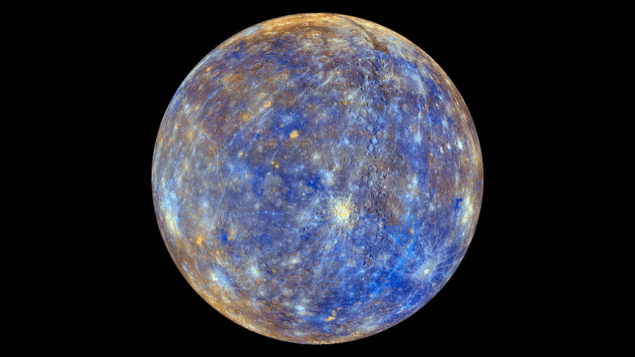
A minuscule correction to the calculation of Mercury’s orbital precession has been made using previously unexplored consequences of Albert Einstein’s general theory of relativity. Clifford Will at the University of Florida has derived new equations of motion to describe a shift of one degree every two billion years in the direction of orbit’s perihelion. Although the tiny movement is currently undetectable, the correction could soon be measured when the BepiColombo mission to Mercury is launched later this year.
Every century, the perihelion of Mercury’s elliptical orbit – the point where the planet is nearest to the Sun – rotates (or “advances”) by around 0.16°. The shift can mostly be explained by using Newton’s laws to calculate the pull of other planets in the Solar System, however a discrepancy between observations and calculations became apparent in the 19th century. In 1916, Einstein famously solved the mystery using general relativity. Now, Will has shown that calculations made by Einstein – and then improved on by others – do not tell the entire story.
Writing in Physical Review Letters, Will predicts that Mercury’s orbit is further influenced by relativistic “cross-terms”, which account for the general relativistic influence of the Sun throughout the entire Solar System. The terms are described using relativistic equations of motion for a system of multiple bodies, which all exert a gravitational pull on each other. Will derived equations which account for how the gravitational attraction between the Sun and other planets has an indirect influence on the pull between the Sun and Mercury.
Gravitomagnetic field
The cross-term equations also describe other smaller influences, accounting for the similar relativistic effects arising from the gravitational attraction between other planets and Mercury. Additionally, the “gravitomagnetic field” of the other planets – which, in analogy to the magnetic field, is generated by the “mass currents” of the planets – shifts Mercury’s orbit further. Overall, Will predicts an additional perihelion advance of one degree every two billion years.

A message from Mercury
Later this year, the joint European-Japanese BepiColombo mission will send two probes to orbit Mercury, allowing for far more accurate measurements of its motion. Will hopes that the measurements will confirm his predictions, which could ultimately help to further advance our understanding of general relativity.



